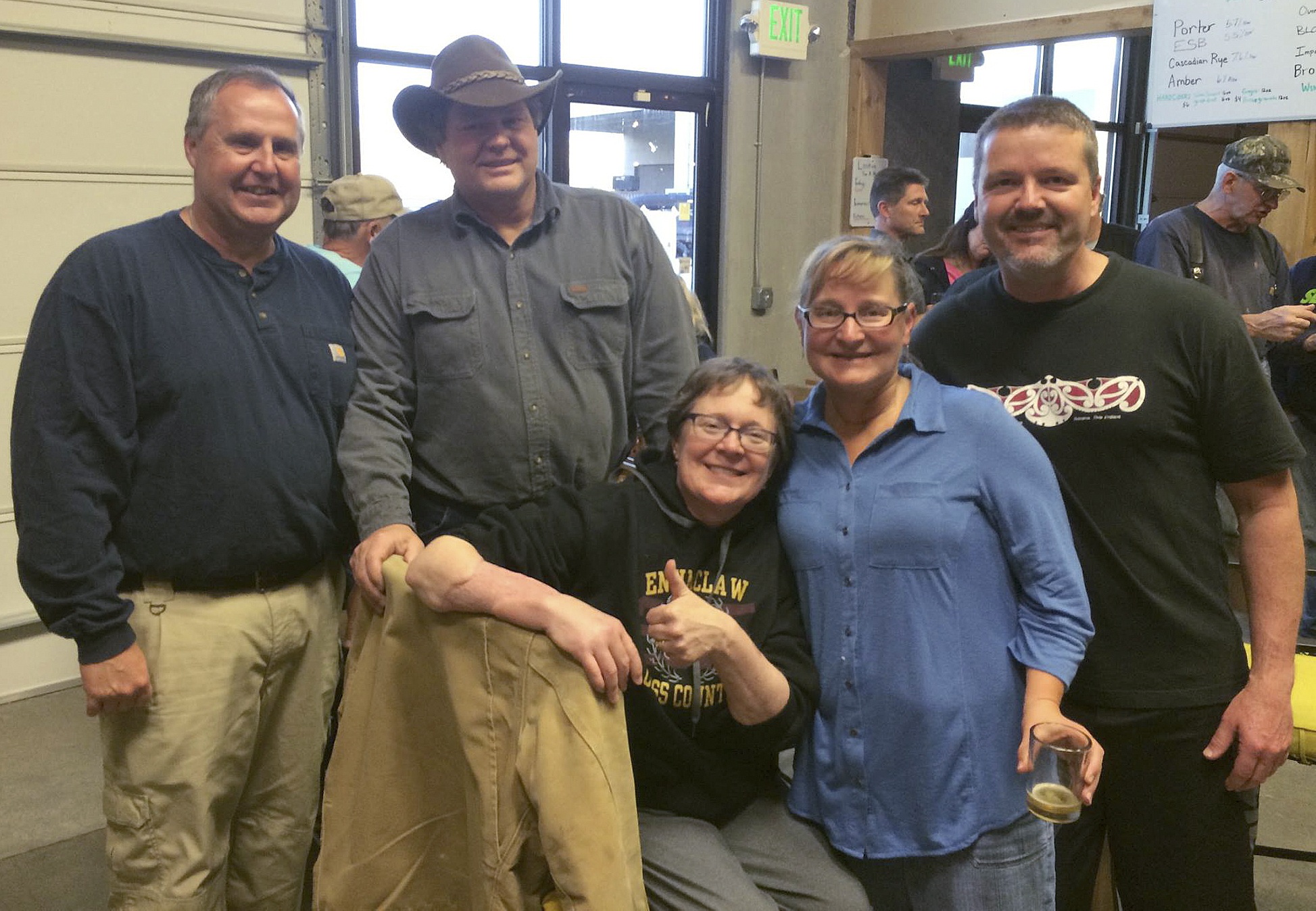James Peet has a very simple reason for celebrating volunteer firefighters and emergency medical services volunteers – they saved the life of his wife.
On Dec. 23, Becky Rush Peet, her two daughters and one passenger were driving on state Route 410 after a day of fun at Crystal Mountain when a tree more than 4 feet in diameter came down on their vehicle.
The tree missed the passenger compartment by a fraction of a second, but Rush suffered 19 compound fractures to both her arms, right ankle and clavicle and ribs as well as a lacerated liver and lung contusion. First responders were worried Rush was going to lose her right arm.
One of the Peet’s daughters suffered a fractured spine, and her friend was hospitalized with numerous injuries.
Their other daughter, despite being in the front passenger seat, suffered only a light concussion and several cuts.
Thankfully for everyone involved, the Greenwater Fire Station, a volunteer-staffed station in Pierce County Fire District 26, was less than 10 miles away and first responders were able to quickly get onto the scene and transport everyone to the hospital alive and intact.
“My wife would not be alive today if it weren’t for them,” James Peet said.
And after three weeks in ICU and ACU care and hundreds of hours in a trauma rehab facility, Rush and the other injured passengers were able to meet their rescuers April 30.
“It was an awesome experience. We don’t often get to do something like that,” said Paul Sowers, fire chief at the Greenwater station and one of the people first on the scene of the crash.
This story had a happy ending, but many others like it could end much differently if volunteer stations like Greenwater weren’t around, and the Washington Department of Health is saying it would like to see more volunteers come on board to help serve these sorts of rural areas.
National Emergency Services Week
This week is the 42nd annual National Emergency Services week, and the Department of Health is recognizing the efforts of both career and volunteer EMS and trauma care staff across the state.
According to Cathy Williams, a Department of Health liaison for the state’s EMS and Trauma Care regions, there are around 16,000 EMS and trauma care professionals working in Washington.
Out of that, around 6,000 of these professionals are volunteers, and the state is hoping to see this number grow.
But Williams said it’s hard for the state to know how many more volunteers are needed, because need varies widely from area to area.
“Greenwater fire may be just fine, but the one in Black Diamond may be low,” she said. “And it changes, because a volunteer may go into a paid position, or a paid position might retire out but volunteer.”
However, Williams said she has seen a general decrease in volunteers over her 15 year career with the Department of Health.
“In general, there are fewer volunteers and more paid staff over time,” she said.
These shifting numbers may not affect areas with large populations and a tax base that funds career fire and EMS departments, Williams continued, but rural areas that can’t afford to fund a career-staffed station rely on volunteers to cover calls city departments can’t get to quickly.
According to Greenwater Fire Chief Paul Sowers, Enumclaw would have been the closest to respond to Rush’s crash if his station wasn’t there, but that extra distance from the city to unincorporated Pierce County could have meant first responders would not have been able to get to Rush in time to save her arm, or even her life.
Sowers said in a phone interview it was a stressful scene, arriving on SR 410 with four initial responders and four people in need of care (those are not good odds, he said), but it’s also not unusual for that to happen out in their area – volunteers often work full-time day jobs on top of being a professional volunteer firefighter and may not be able to respond to calls quickly, especially during the regular work week.
Even so, rural areas like Greenwater rely on volunteer fire and EMS stations in order to provide protection and services career stations can’t, he said.
“The volunteer fire service for rural America is pretty much the backbone of public safety, as far as fire and EMS goes,” Sower said. “The big city fire departments have the big events you see on TV, but in reality, in little towns all over America, it’s the volunteers that are doing most of the work.”
According to the National Fire Protection Association, out of the 1,134,400 firefighters that worked across the country in 2014, 69 percent were volunteers.
Most volunteer firefighters (upwards of 95 percent) serve areas in communities with populations less than 25,000 people, and half of these volunteers serve communities with less than 2,500 people.
Like Williams, Sowers has seen a general decrease in people willing to be a volunteer firefighter or EMS staff.
“That whole culture is disappearing from our society,” he said. “It’s a darn shame.”
“That’s a darn shame.”


